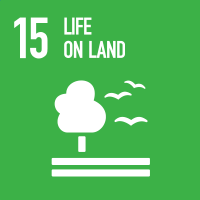Studying at the University of Verona
Here you can find information on the organisational aspects of the Programme, lecture timetables, learning activities and useful contact details for your time at the University, from enrolment to graduation.
Study Plan
This information is intended exclusively for students already enrolled in this course.If you are a new student interested in enrolling, you can find information about the course of study on the course page:
Laurea in Scienze e tecnologie viticole ed enologiche - Enrollment from 2025/2026The Study Plan includes all modules, teaching and learning activities that each student will need to undertake during their time at the University.
Please select your Study Plan based on your enrollment year.
1° Year
| Modules | Credits | TAF | SSD |
|---|
2° Year activated in the A.Y. 2023/2024
| Modules | Credits | TAF | SSD |
|---|
3° Year activated in the A.Y. 2024/2025
| Modules | Credits | TAF | SSD |
|---|
| Modules | Credits | TAF | SSD |
|---|
| Modules | Credits | TAF | SSD |
|---|
| Modules | Credits | TAF | SSD |
|---|
Legend | Type of training activity (TTA)
TAF (Type of Educational Activity) All courses and activities are classified into different types of educational activities, indicated by a letter.
Plant genetics and breeding (2023/2024)
Teaching code
4S02027
Credits
6
Language
Italian
Scientific Disciplinary Sector (SSD)
AGR/07 - AGRICULTURAL GENETICS
Courses Single
Authorized with reserve
The teaching is organized as follows:
Teoria
Laboratorio [Laboratorio 1° turno]
Laboratorio [Laboratorio 2° turno]
Learning objectives
The course aims at illustrating principles of genetic transmission at molecular, cellular and population level. Mendelian, molecular and population genetics elements will be taught. Existing traditional grapevine breeding methods, based on natural and induced genetic variability, and modern plant breeding instruments, genomic based, will be reviewed.
Prerequisites and basic notions
Knowledge of cell biology and physiology, organic chemistry and biochemistry
Program
Introduction to genetics, the different branches of genetics. Identification of genetic material from Griffith's experiments and from those of Avery, McLeod and McCarty.
Chemical, physical and functional structure of DNA. Organization of DNA.
The chromosomes.
DNA replication, Meselson and Stahl experiments, DNA polymerase and telomerase.
Gene expression and the central dogma of molecular biology Properties of RNA, types of RNA.
The genetic code and protein translation.
Gene regulation, differences between prokaryotes and eukaryotes.
Gene mutations and repair mechanisms.
Natural and induced mutations.
Chromosomal and genomic mutations, aneuploidy and polyploidy.
Mitosis and cell cycle.
Meiosis and gamete formation.
Mendelian inheritance and chromosomal theory of inheritance. Extensions to Mendel's hypotheses, autosomal genes and genes linked to sex.
Associated genes and association maps.
Segregation and recombination and cytological basis. Qualitative and quantitative characters, Johanssen studies in bean.
Heritability, environmental and genetic variance.
Extranuclear inheritance, chloroplasts and mitochondria. Epigenetic inheritance.
Transposons and mobile elements.
Population genetics.
Genetic improvement of plants, conventional methods and methods based on genetic modification.
The goals of modern breeding in viticulture.
Didactic methods
Lectures with laboratory exercises. Lessons will be delivered exclusively in person without any recourse to emergency online teaching methods. It will not be provided in other ways except limited to students who, due to Covid, cannot access the University, upon presentation of the relative request on the appropriate form. The delivery methods relating to this case will be decided by the teacher and may include sending the registration, organizing a lesson in streaming, sending additional material or organizing a meeting in person or remotely.
Learning assessment procedures
The assessment of learning outcomes involves a written test with multiple choice questions, open questions and exercises. The test lasts 2 hours. To access the written test it is necessary to submit at least one week before the test the reports relating to the laboratory activities with compulsory attendance. If the mark in the written test is less than or equal to 20/30, the candidate will also have to sit an oral test. If the grade of the written test is higher than 20/30, the candidate can choose to take the oral test or accept the grade of the written test. The oral exam potentially covers all the topics of the program. The final evaluation is expressed out of thirty
Evaluation criteria
The scores attributed to the multiple choice answers, to the open answers and to the exercises will be explained in the exam text. The laboratory reports will be assigned the following scores: "1" for complete and well-structured relationships, "0" for sufficiently structured relationships and "-1" for incomplete relationships.
Criteria for the composition of the final grade
The final grade will be calculated by adding the grade from the written test with the grade of the report.
Exam language
Italiano


